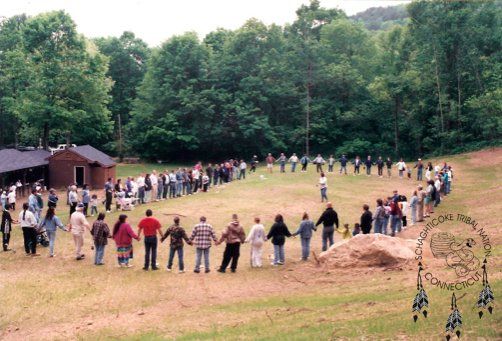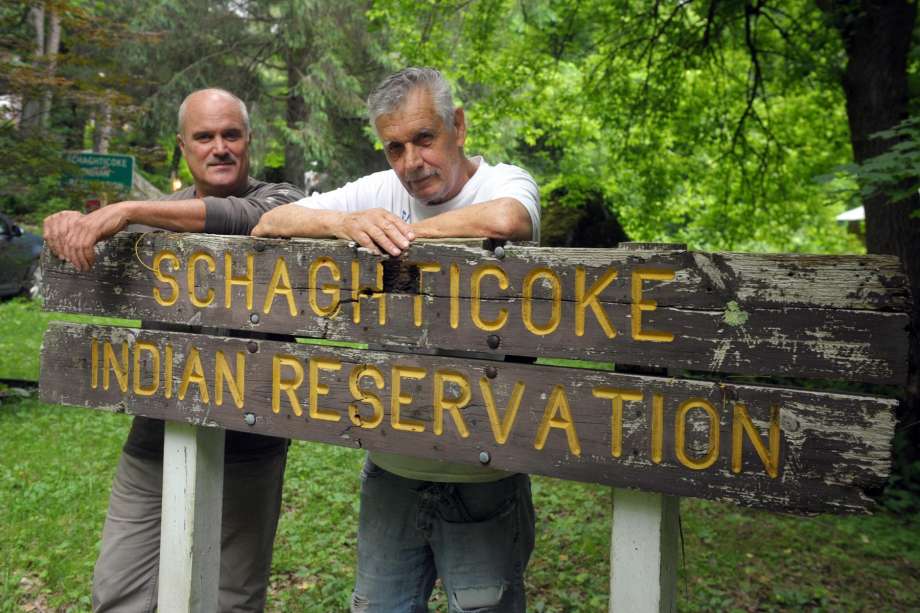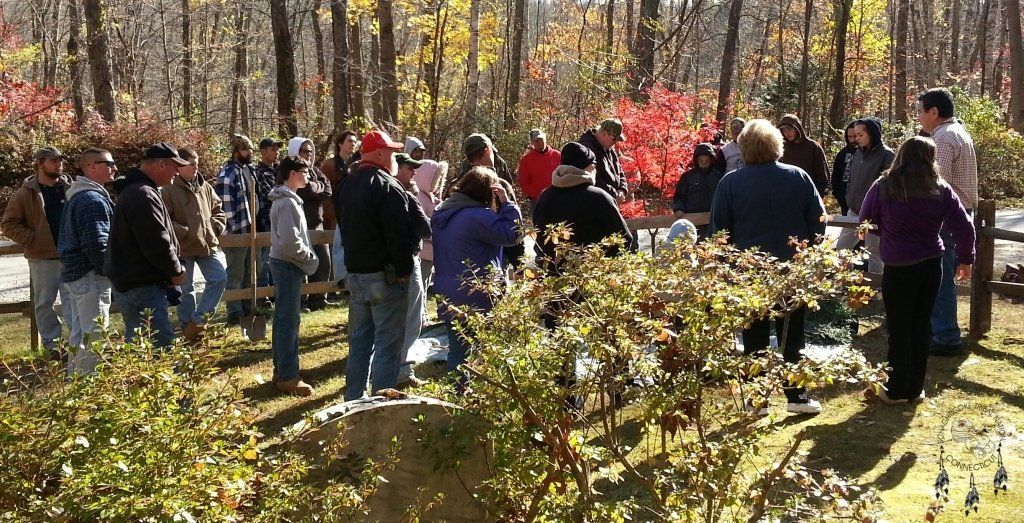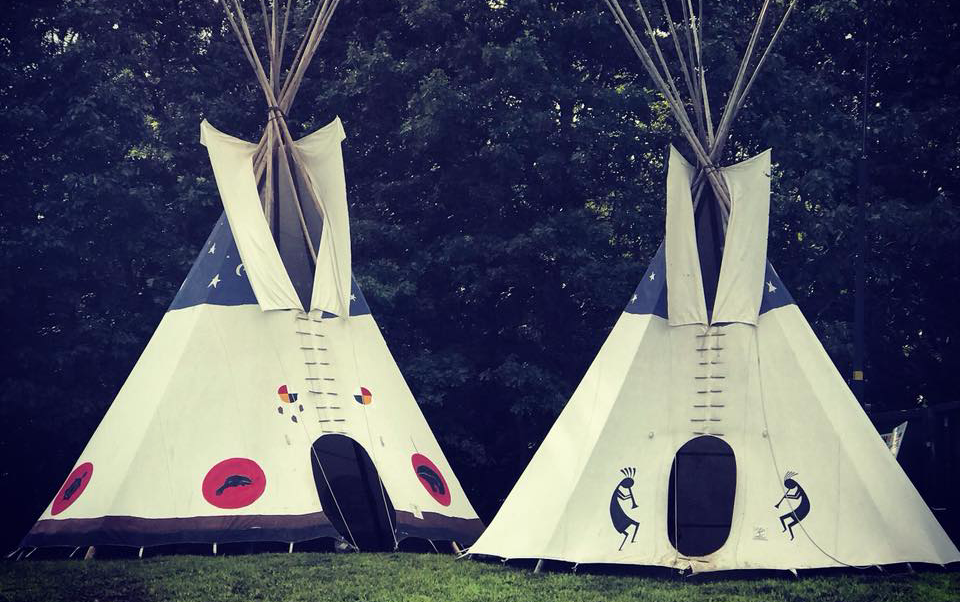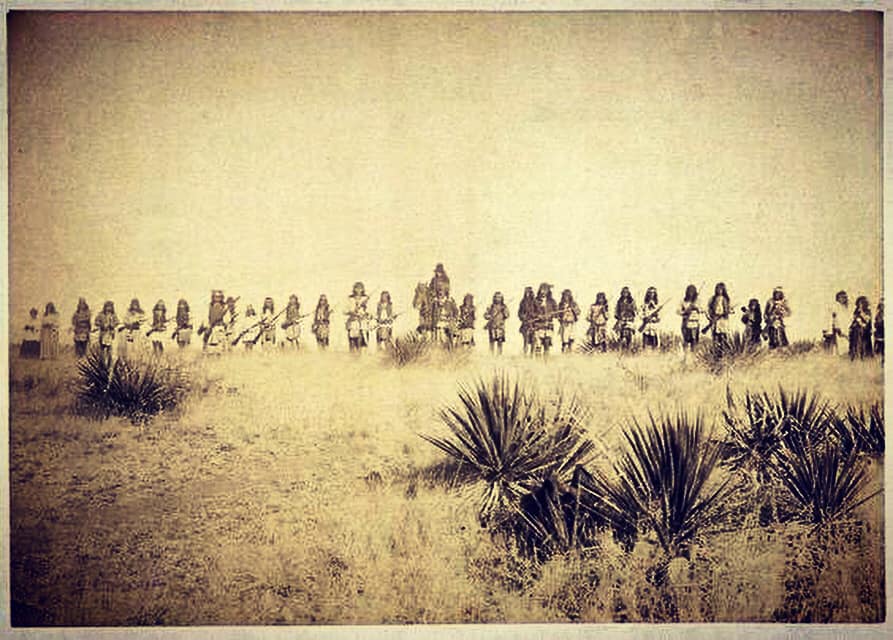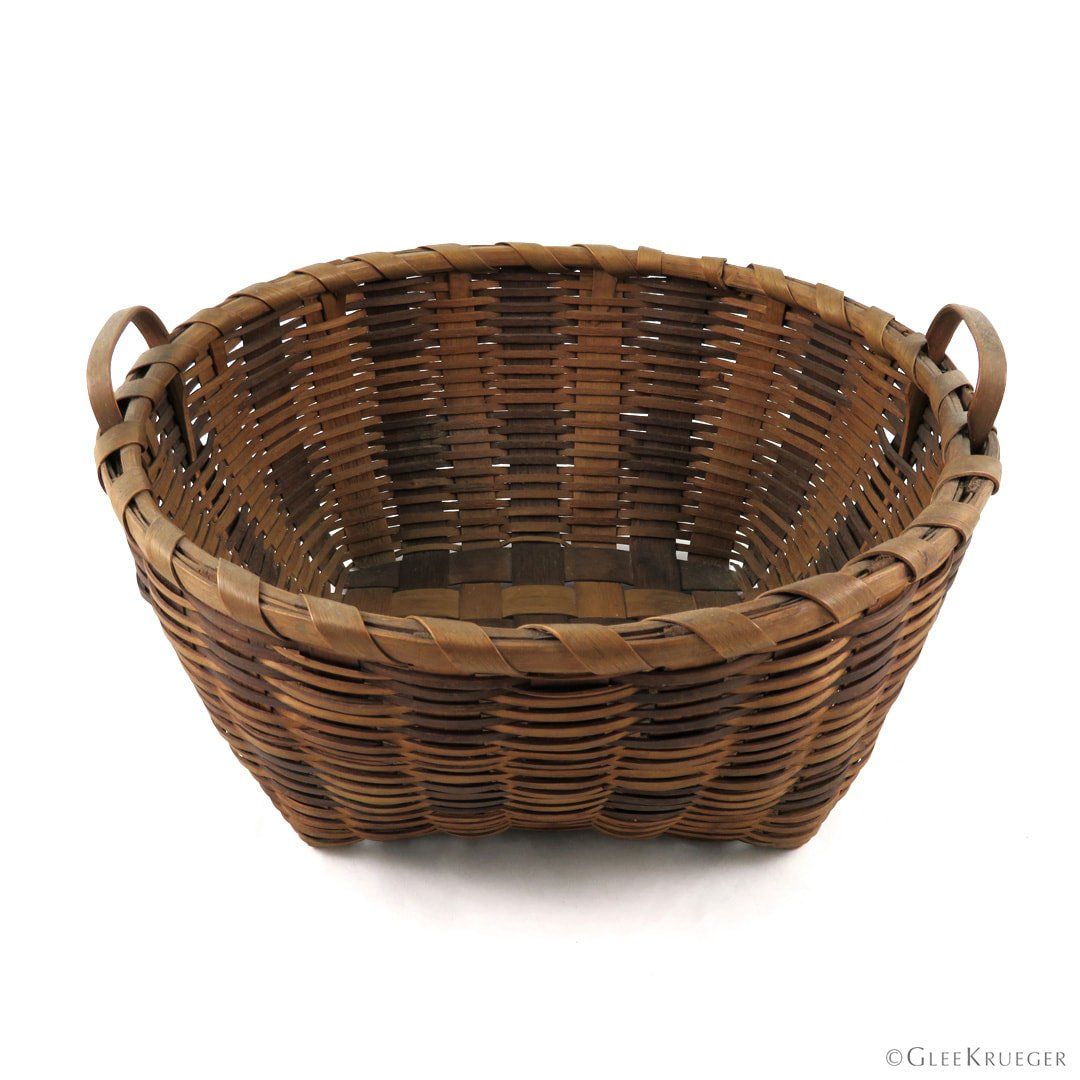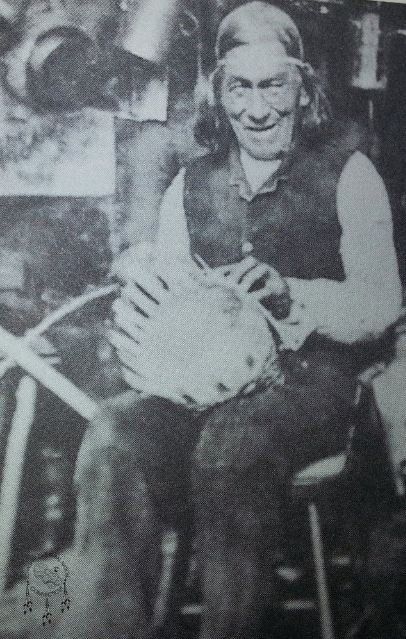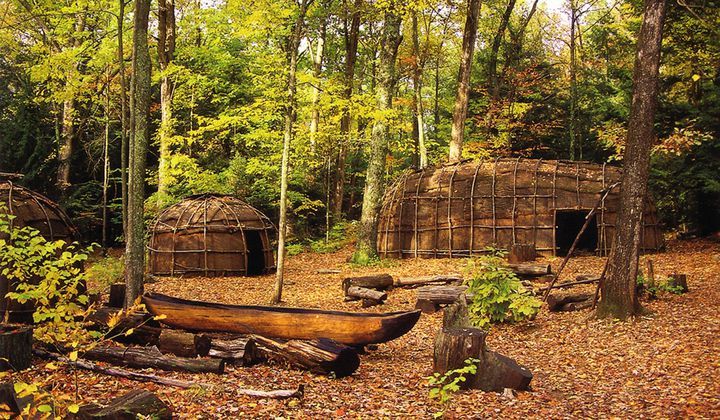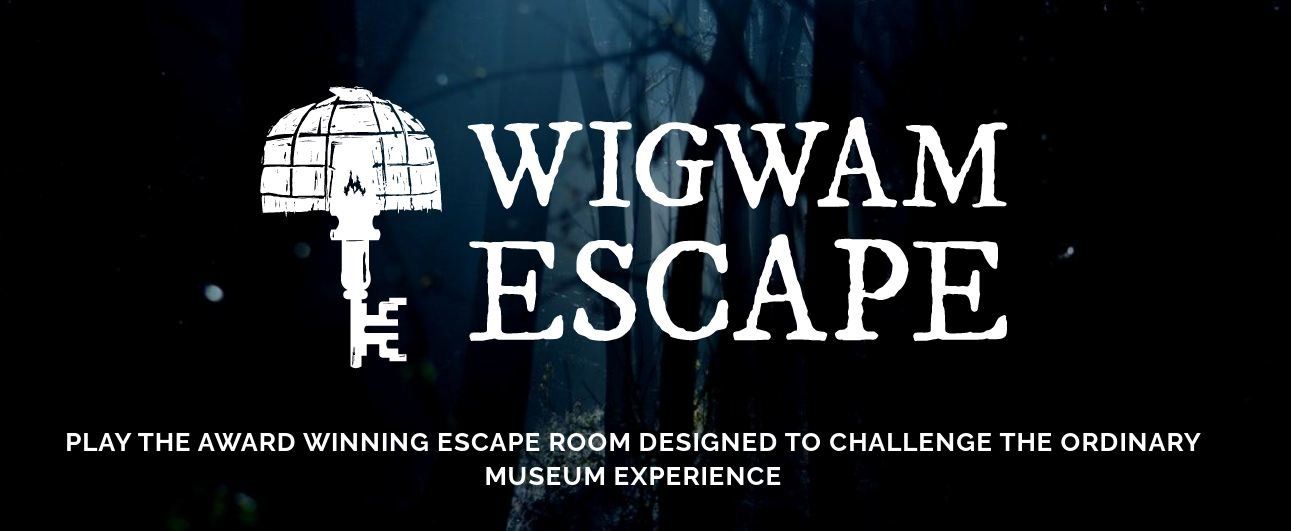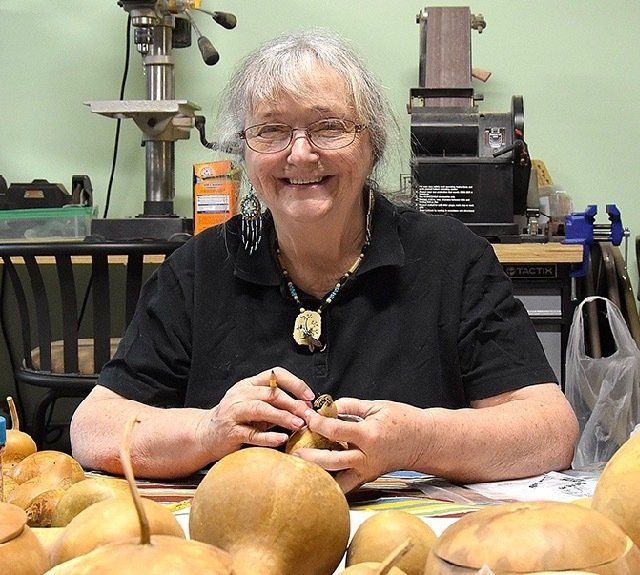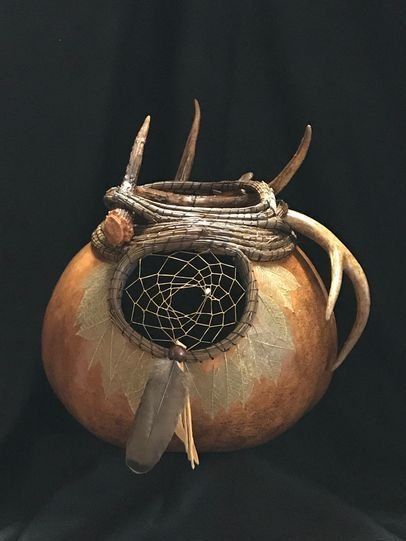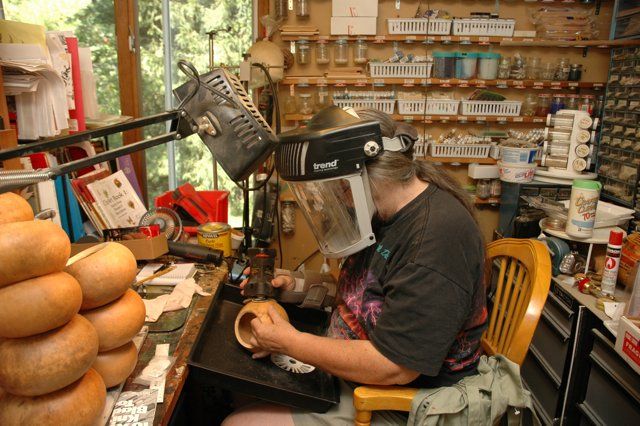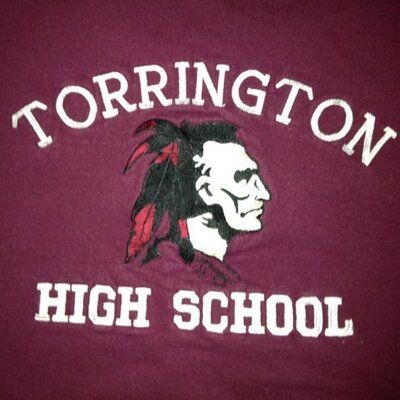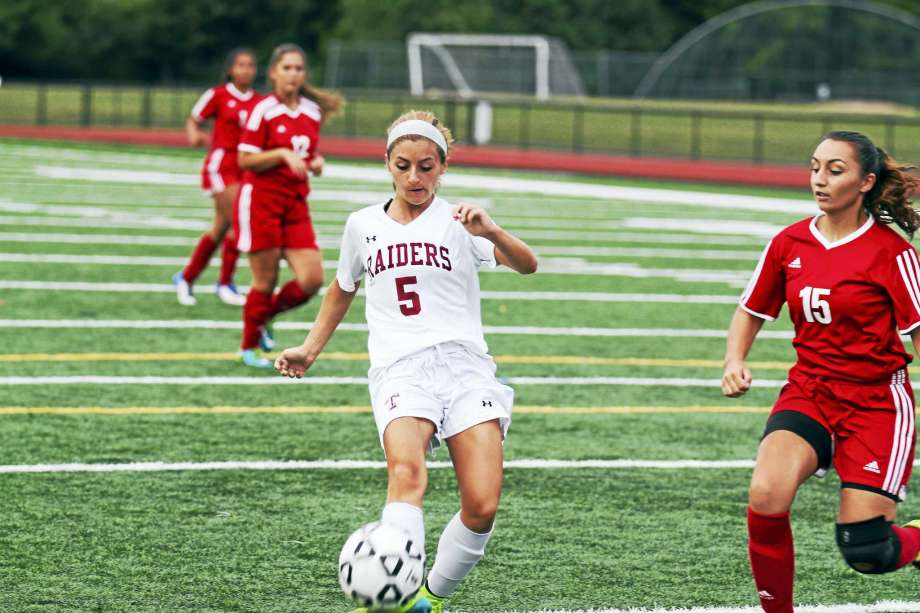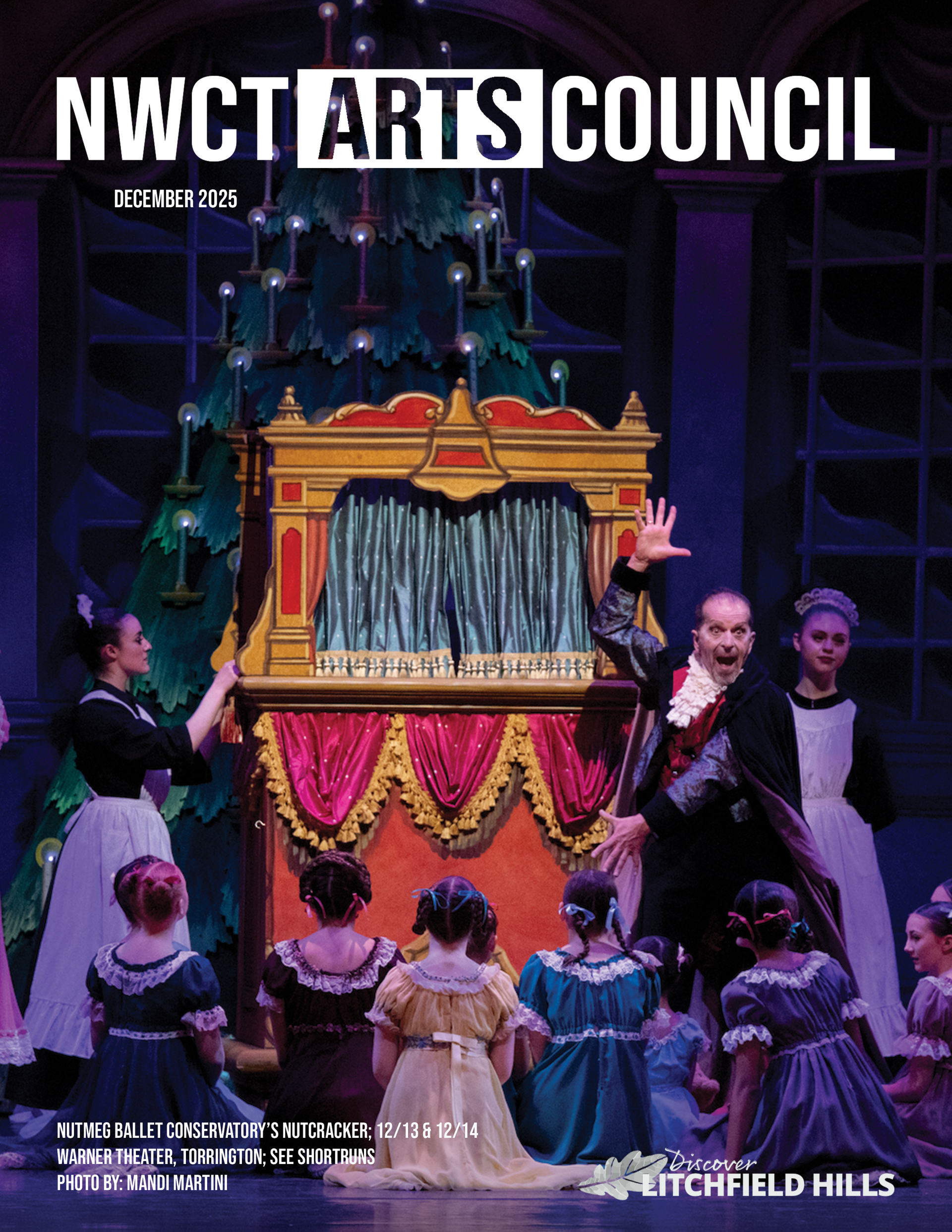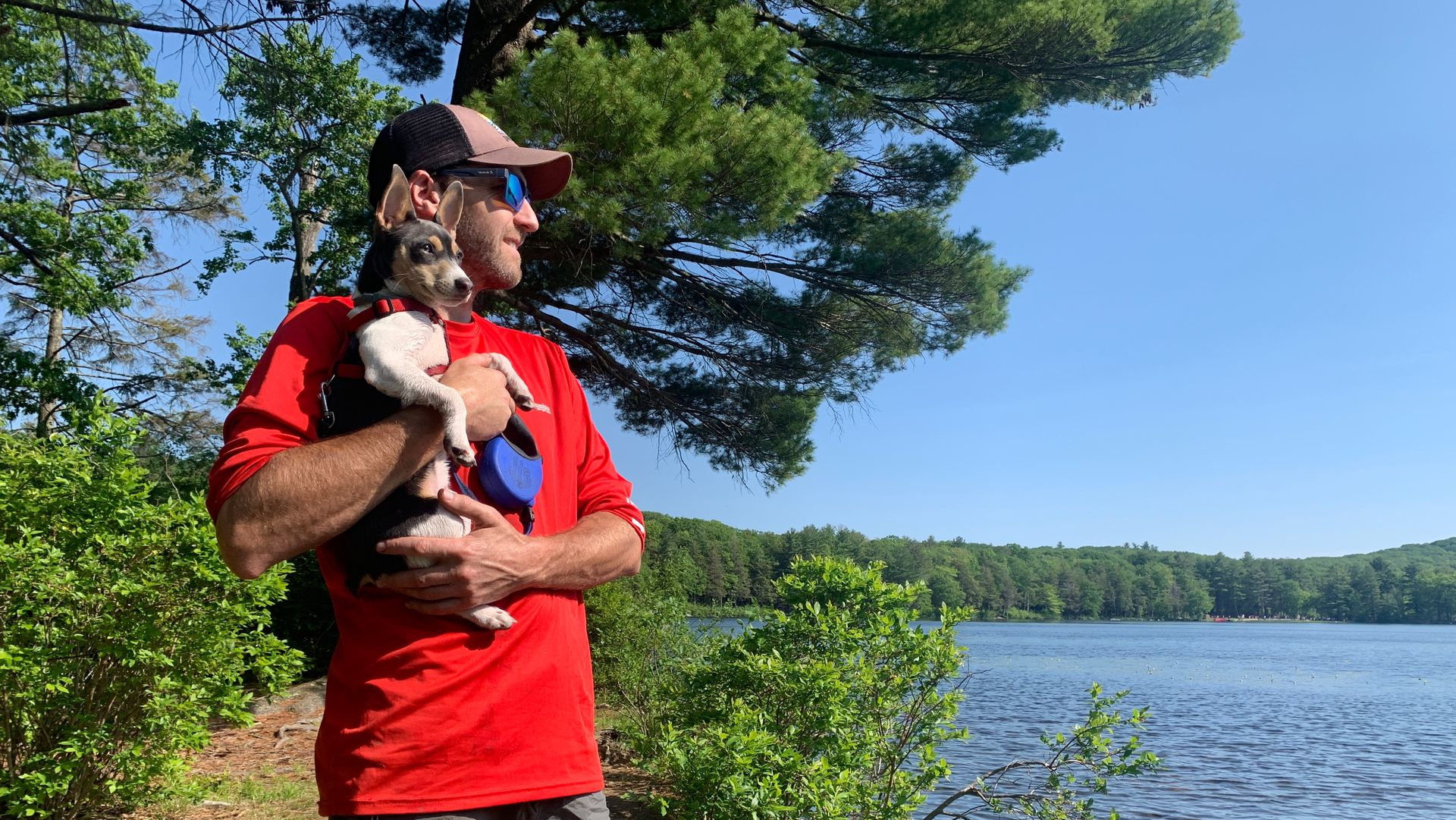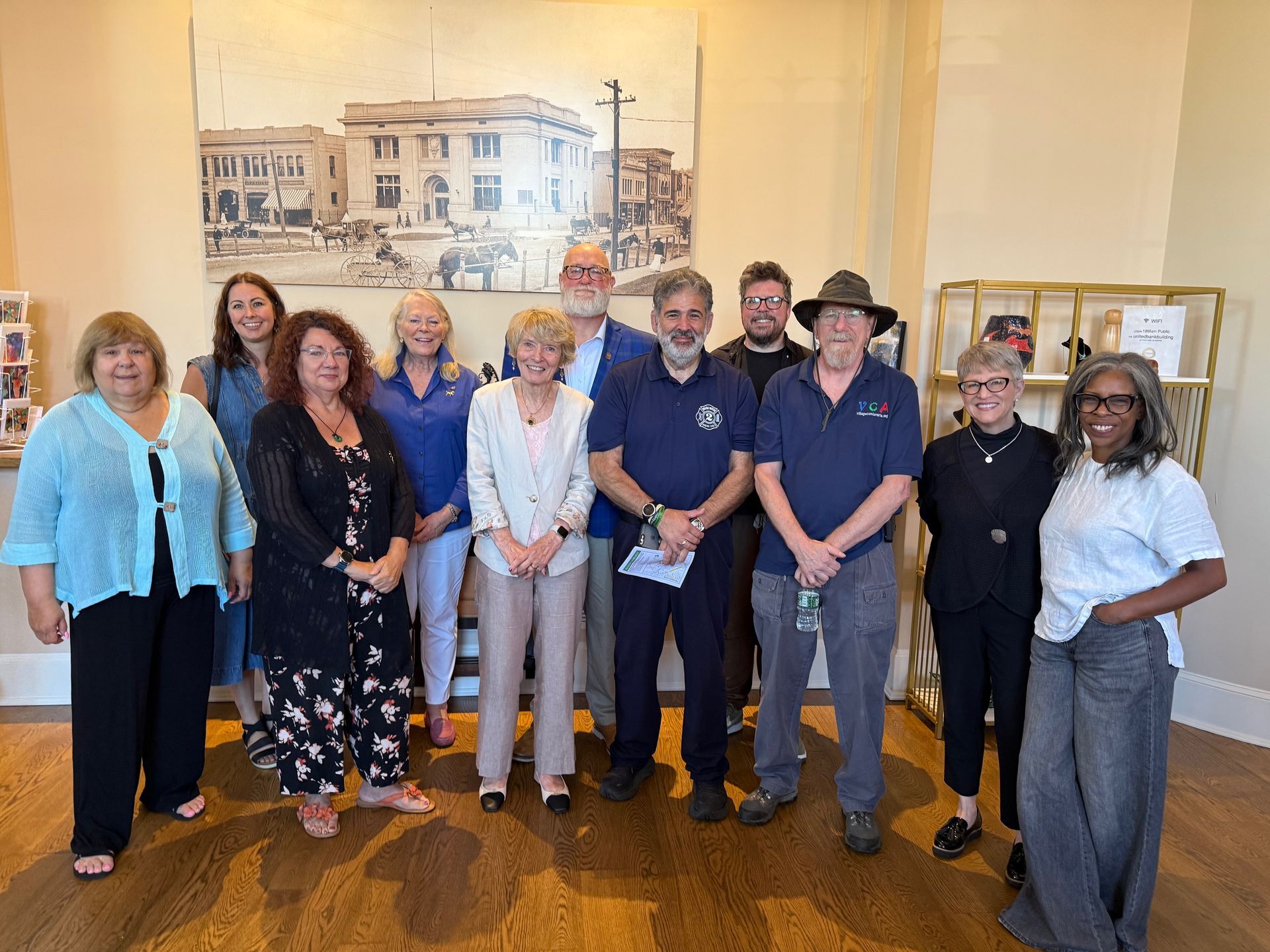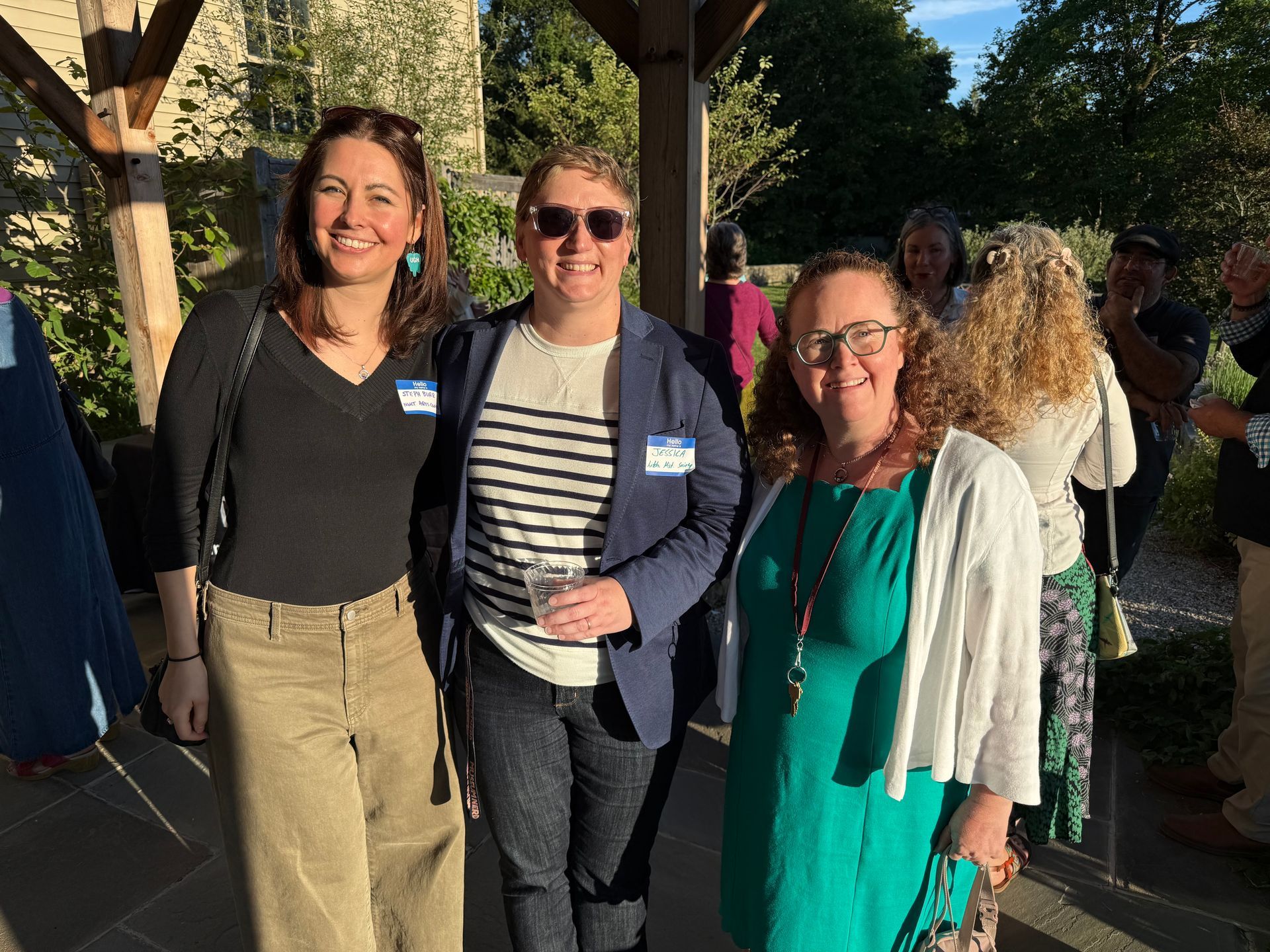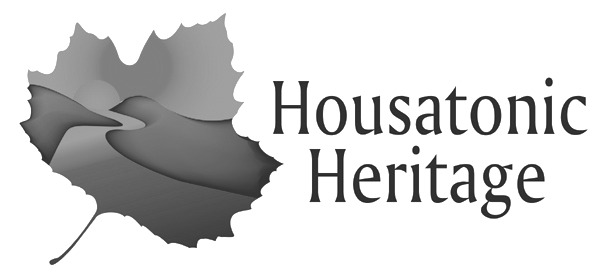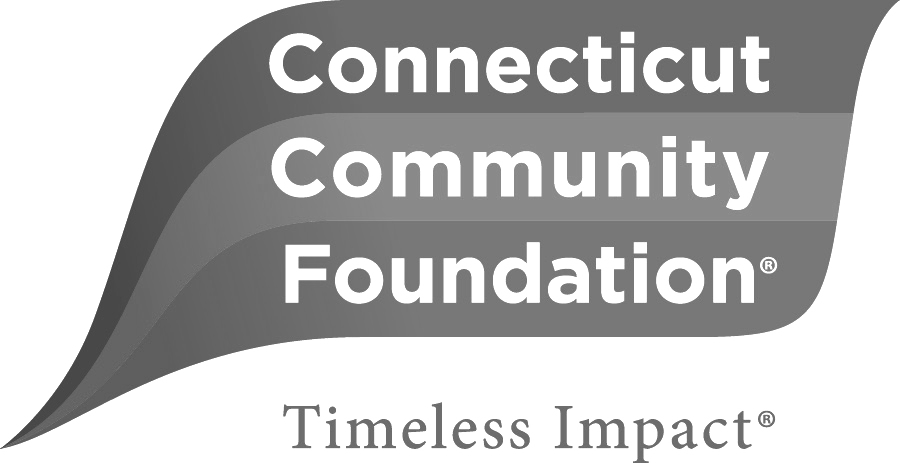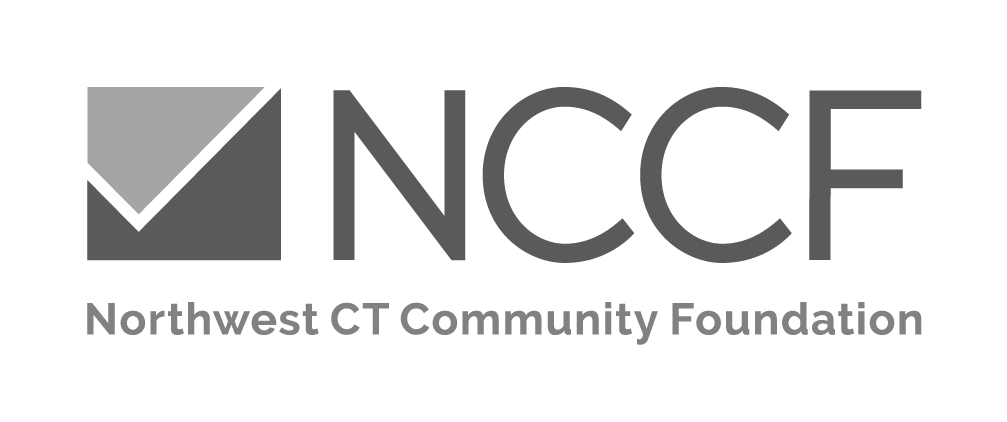Whose Land Do We Live On? Indigenous Peoples of NWCT
The First Peoples of NWCT
Present Day
Today, Connecticut law recognizes five tribes: Golden Hill Paugussett, Mashantucket Pequot, Mohegan, Paucatuck Eastern Pequot, and Schaghticoke.
The Schaghticoke Tribal Nation is located in NWCT, with 300 members and a roughly 400-acre state reservation in Kent.
The recent history of the Tribe has been marked by oppression.
"From 1925 to 1972, Connecticut intensified a policy of detribalization and termination, making it extremely difficult for tribal members to live and gather on the Reservation. Tribal members were forced out, while those wanting to return home were refused permission. Except for farming, no business could be transacted and no buildings or improvements could be added without the written consent of the state. This anti-Indian policy is underscored by the fact that there were no public powwows on the Reservation between 1941 and 1972. All in all, tribal members recall, the Reservation was a “difficult place to live and survive” during this century." [1]
In 2014, the remains of several natives were unearthed due to residential construction. These remains date back to the mid-17th century. According to the tribe's website, "Thanks to Nick Bellantoni, retired Connecticut State Archeologist, the remains were returned to our land on November 2, 2014 during a ceremony led by Ed Sarabia. Many were in attendance to see our ancestors reunited with Mother Earth."
Today, the Schaghticoke Tribal Nation is currently in the midst of an ongoing land dispute and and quest for returned federal recognition.
In 2004 the tribe was awarded federal recognition, only to have it rescinded in 2005. According to the Tribe's website, "The Bureau of Indian Affairs (BIA) has approved only 16 of the 81 tribes that have submitted complete applications for federal tribal acknowledgement. But only two tribes have earned federal acknowledgement only to have it rescinded: Connecticut’s Schaghticoke and Eastern Pequot tribes. The Schaghticoke Tribal Nation’s petition for recognition was “among the best and most thoroughly researched petitions ever reviewed by the Bureau of Indian Affairs” according to the sworn affidavit of former BIA Assistant Secretary Aurene Martin.
What led the Department of the Interior to disregard 45,000 pages of documentation, change its position, and decline to acknowledge the Schaghticoke as a tribe? A highly politicized dispute has resulted in the Schaghticoke having to endure what the Manataka American Indian Council calls “the ultimate insult – having to prove they are indeed descendants of this continent’s original inhabitants in order to keep from being obliterated from the pages of modern history.”
Schaghticoke Tribal Nation Chief Richard Velky calls it “cultural genocide.” [2]
To learn more about the Schaghticoke Tribe, check out this interview with Chief Velky or visit their website.
The Institute for American Indian Studies is a cultural landmark and educational museum located in Washington, CT.
"The Institute for American Indian Studies (IAIS) museum, education and research center in Washington, CT opened its doors in 1975 as an outgrowth of local efforts to recover New England's, then largely unknown, indigenous history. IAIS' core values of preservation, education and sharing of Native American cultures, traditions and community from deep history to contemporary times are the foundations of our programs, lectures, events, workshops and research. IAIS is open year-round, seven days a week (except major U.S. holidays) offering 4 exhibit galleries, a Children's Discovery Room, replicated outdoor 16th century Algonkian village, the Four Directions Gift Shop plus outdoor gardens and trails along our 15 acres of woodland landscape. Come explore the past, engage with the present, and embrace Mother Earth at the Institute for American Indian Studies. Walk in the footsteps of Native Americans past and present and experience Life in the Woodlands!" [3]
In 2019, the museum announced the opening of its Wigwam Escape Room. The award-winning game presents a series of interactive puzzles and invites visitors to immerse themselves in the world of the Native people from over 500 years ago.
The attraction is open and they are taking special precaution to ensure safety according to the COVID-19 guidelines.
Artist Spotlight:
Jean Morningstar Kent
Jeanne Kent was named Spozowialakws (Morningstar) by an Abenaki Elder many years ago. It means: "One who leads others out of the darkness into the light...a teacher."
She is an enrolled member of the Nulhegan Band, Coosuk Abenaki of Vermont. Her art work contains Native American symbols and designs of the Northeast Woodland People with focus on the Wabanaki group. Her medium is gourd art. Currently, she is working on a series of gourd designs which she hopes will provide a visual language for the woodland People. Her work is now part of the permanent collections of six museums and in private collections here and abroad.
"There is something wonderful about putting one's hands into the soil to plant the seed, nurturing it until the blossoms form, then protecting them until they develop into natural canvases upon which to work my art, " she said. "Working with gourds is a combination of my art and heritage bound together in a spiritual journey with Mother Earth."
Call for Advocacy:
Sign the Petition to Update Torrington's School Mascot from the "Red Raiders"
Torrington Connecticut is a city that takes pride in its history of being the birthplace of famous abolitionist John Brown. Despite this claim to fame, Torrington High Schools mascot still remains the "Red Raiders", a outdated homage to the oppression of Indigenous people that even makes mention of the skin tone stereotype. There has been action to remove the word "Red" but we feel this is not enough.
By signing this petition, we encourage you to help us advocating for the change of the current mascot to a much more relevant and modern mascot of the "Torrington Abolitionists".
Instead of the shallow symbol of colonialism and oppression, the town should honor its own history and give the high school students a mascot that they can be proud to represent.
No high school student should be deterred from participating in sports due to the shame of wearing outdated symbolism. Most high school student today understand the troubling implications of the current mascot, and may look back on their days wearing the uniform with shame rather than pride.
Now is the time for change, and we are proposing a great alternative.
Please sign the petition to show your support for modernizing the mascot, rejecting colonialism, and honoring one of the greatest revolutionary leaders in American History, John Brown.


